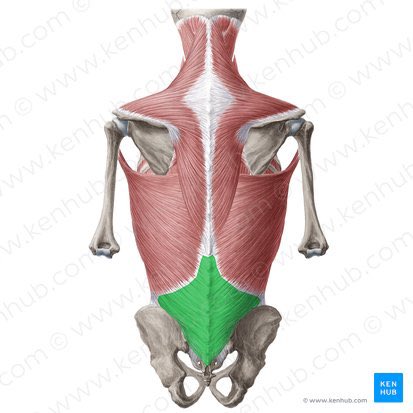The most underrated (and surprising) key to glute activation you’ve never considered: Your big toe.
There is an inherent connection that most aren’t aware of.
Here’s why - and you can use it to improve strength and boost performance. 🦶🍑
There is an inherent connection that most aren’t aware of.
Here’s why - and you can use it to improve strength and boost performance. 🦶🍑

First, two key facts:
1️⃣ Your glute max’s main job is hip extension, or straightening the hip.
1️⃣ Your glute max’s main job is hip extension, or straightening the hip.
2️⃣ Hip extension is naturally triggered in walking/running when your big toe presses into the ground as you push off.
That means…
There’s an inherent link between:
✅ Big toe connection to the floor
✅ Proper glute firing & force production
There’s an inherent link between:
✅ Big toe connection to the floor
✅ Proper glute firing & force production
Here’s the problem:
Many people I see with low back pain or knee pain struggle to keep their big toe grounded - especially in squats or split squats.
When that toe lifts, your glutes never get the full “go” signal.
Many people I see with low back pain or knee pain struggle to keep their big toe grounded - especially in squats or split squats.
When that toe lifts, your glutes never get the full “go” signal.
The fix: give your big toe a tactile reference to press into.
This could be:
•A wedge under the toe joint
•A folded paper towel (yes, really)
•Any small support that keeps the toe connected
This could be:
•A wedge under the toe joint
•A folded paper towel (yes, really)
•Any small support that keeps the toe connected
One of my favorite uses?
A hinge-focused split squat with the wedge under the big toe.
This makes it far easier to feel your glutes driving the movement.
A hinge-focused split squat with the wedge under the big toe.
This makes it far easier to feel your glutes driving the movement.
I’ve seen this simple tweak help countless clients with knee or low back pain not only reduce discomfort, but finally feel their glutes work in squats and other lifts.
Bottom line:
Your big toe is a hidden switch for glute activation.
Give it the right contact, and you unlock more strength, better movement, and less pain.
Your big toe is a hidden switch for glute activation.
Give it the right contact, and you unlock more strength, better movement, and less pain.
If you enjoyed this thread, I have a newsletter with exclusive free education.
I send out:
✅Exercises that get results fixing mobility & pain
✅Case studies
✅Targeted solutions for specific problems like this
Join here: conorharris.com/newsletter
I send out:
✅Exercises that get results fixing mobility & pain
✅Case studies
✅Targeted solutions for specific problems like this
Join here: conorharris.com/newsletter
• • •
Missing some Tweet in this thread? You can try to
force a refresh
















